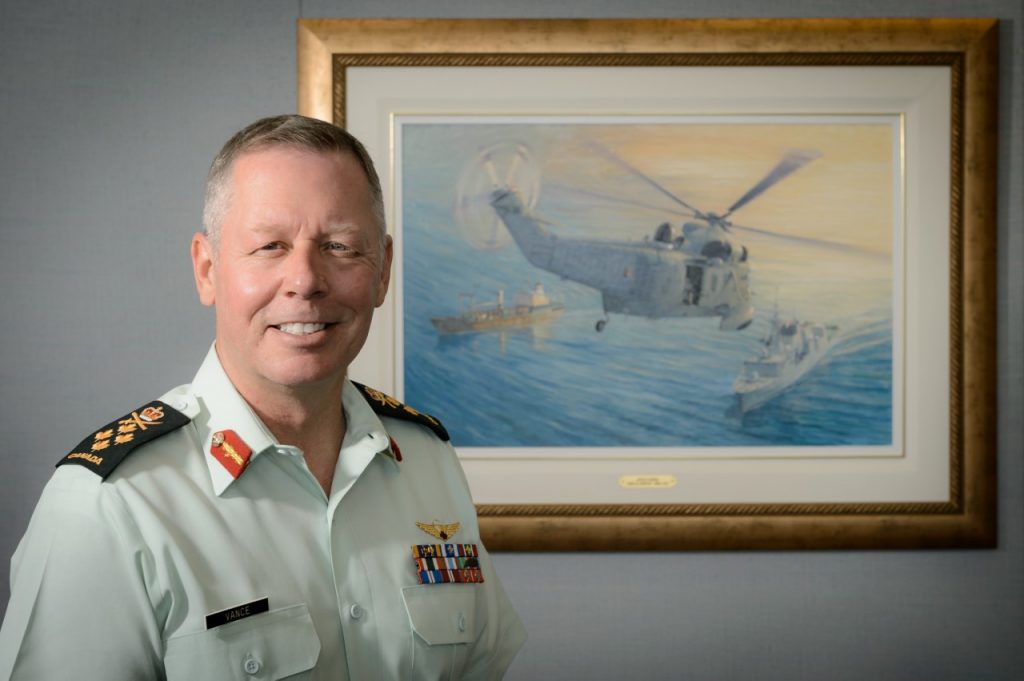New exhibit at Canadian War Museum features military art
By Hunza Chaudhary
The Canadian War Museum’s latest exhibition will feature various works of art created by civilian artists deployed worldwide with the Canadian Forces to such locations as Kuwait, Ukraine and Hawaii.
Initiated in 2001, the program has become popular among artists across Canada. The program receives about 50 applications when it runs every other year, but only five to 10 artists are chosen.
This year’s exhibit, which opened on Feb. 2, marks the seventh time a group of artists has been featured at the museum.
John MacFarlane, who heads the program for the Canadian military, said it was created in 2001 because there was no other way for artists to have systematic access to the Canadian Forces.
“The program helps the artist to see what the military is doing today,” he said. “A lot of the diaries and even the photos, they don’t capture the essence of what it’s like to be in the military. So, having an extra perspective provides an extra piece of the puzzle for the future to see what it’s like today.”
Allan MacKay is one of the three male artists who were a part of the pilot project almost two decades ago.
Only a few months after the 9/11 terror attacks in the U.S., he travelled to Afghanistan to spend six days with the Canadian army.
“As an artist, I did the best I could with that experience. I took a lot of video footage and I produced a lot of work,” he said. Due to time constraints, he soon realized that his paintings would have to wait until he returned to Canada.
He says he felt like a tourist who was in a war zone who took many pictures and then disappeared.
Kathryn Mussallem is one of the artists featured this year for her photography during 2014-2015.
She travelled aboard HMCS Calgary, sailing from San Diego to Pearl Harbor for RIMPAC (Rim of the Pacific), which is the largest naval exercise in the world. The 20 photos for her exhibit include numerous candid shots of Canadian sailors during the mission.
One of the challenges she experienced during her trip was her fear of boats and seasickness.
She says her boyfriend at the time warned her that her first day on board was going to challenge her. “And it did,” she said. “It was so rough, I just took a lot of Gravol and went to sleep.”
The rest of her days were spent tanning, hanging out of helicopters for photos and otherwise doing her job.
Another veteran of the program, John Horton, served as a marine in Britain’s Royal Navy before emigrating to Canada and embarking on a career as a marine artist. Horton said young people today don’t have a clue about war situations.
He went to the Arabian Gulf with the Canadian navy in 2002 as part of the artists’ program, and said experiences would be much different for an artist today.
“We’re not fighting a war at the moment like we were then. They’re pretty well going away on things like exercises and deployments, so they’re not really getting the experience that I had,” he said.
When it comes to the challenges faced on sea, seasickness was the least of Horton’s worries. Aside from deciding what to paint, it was a question of creating an image to represent the role of the navy.
“The main challenge was the interdiction of the vessels that were carrying illegal oil and possibly Al-Qaeda terrorists escaping by sea,” he said.
Horton said he wishes he had been properly trained before going on his deployment. He said he explained to MacFarlane the ways in which the program could be improved.
“An artist who has absolutely no understanding of the military or the environment that he’s in, you have to be very careful,” he said. “I think they needed a better briefing before they went.”
MacFarlane said the input from Horton was taken on board. “The way we’ve incorporated John’s advice was to have more advice from our office to the unit.”
Each military unit, whether it’s the navy, army or air force, is required to conduct training with the artist tailored to that unit. MacFarlane said that since Horton’s time, the pre-deployment training of artists is conducted much more systematically.
The exhibit will run from Feb. 2 to April 2 at the LeBreton Flats museum’s Lieutenant-Colonel John McCrae Gallery. The museum already has plans to hosts artists’ groups 8 and 9 in future years.

